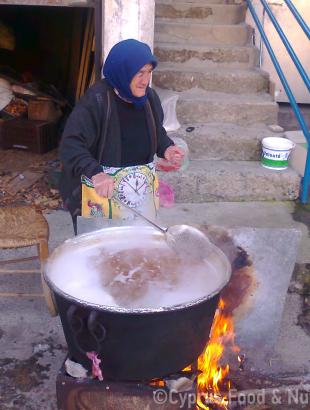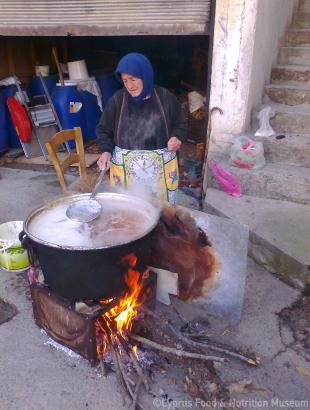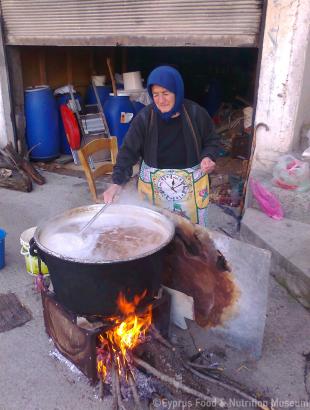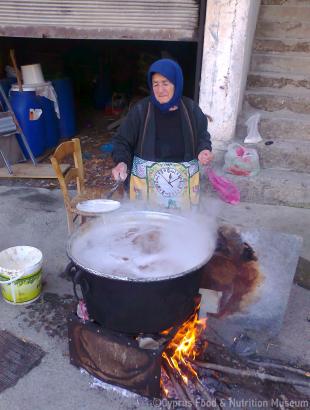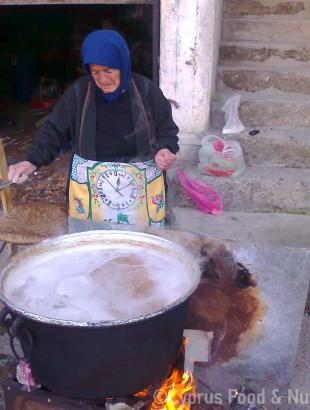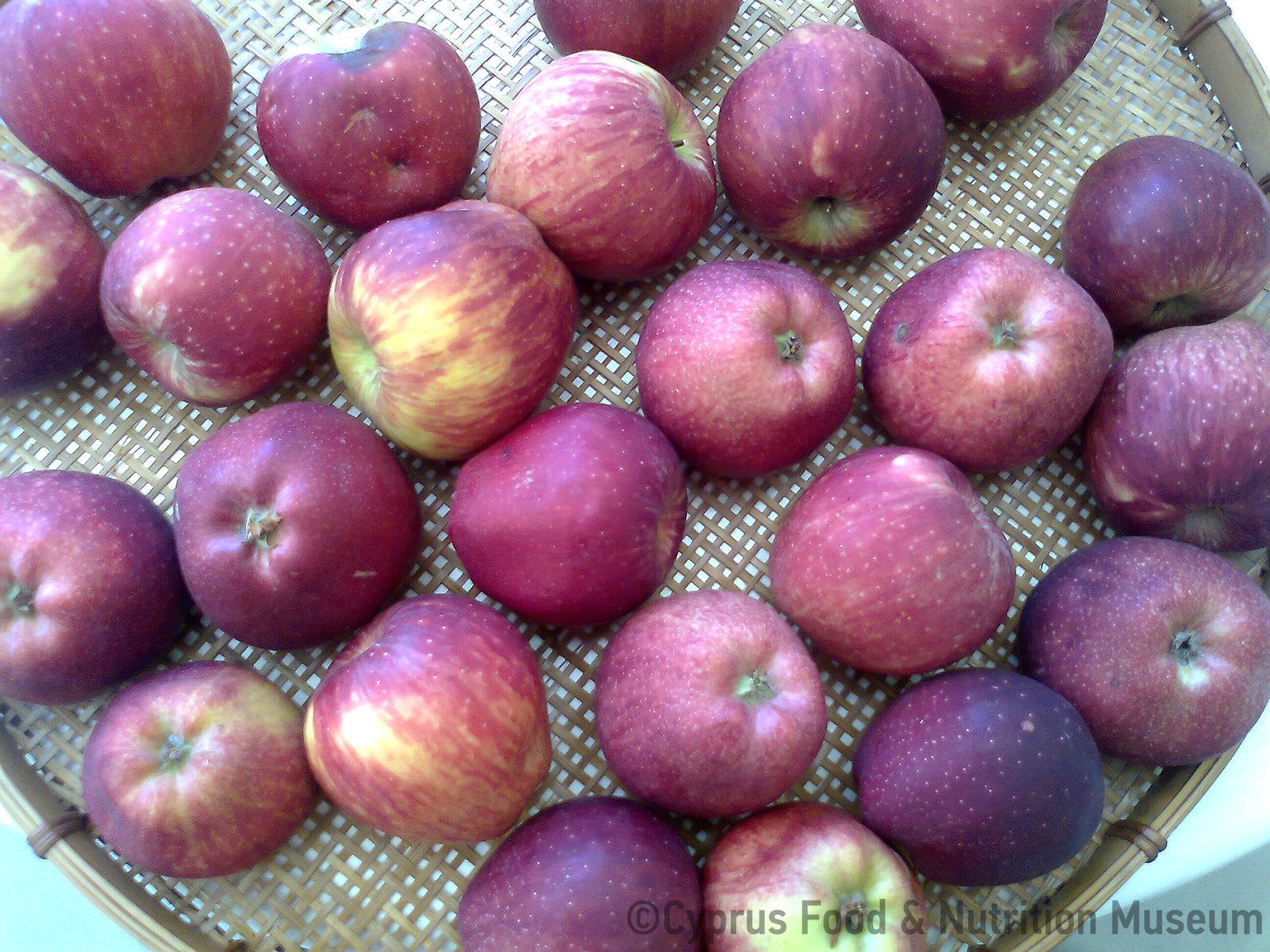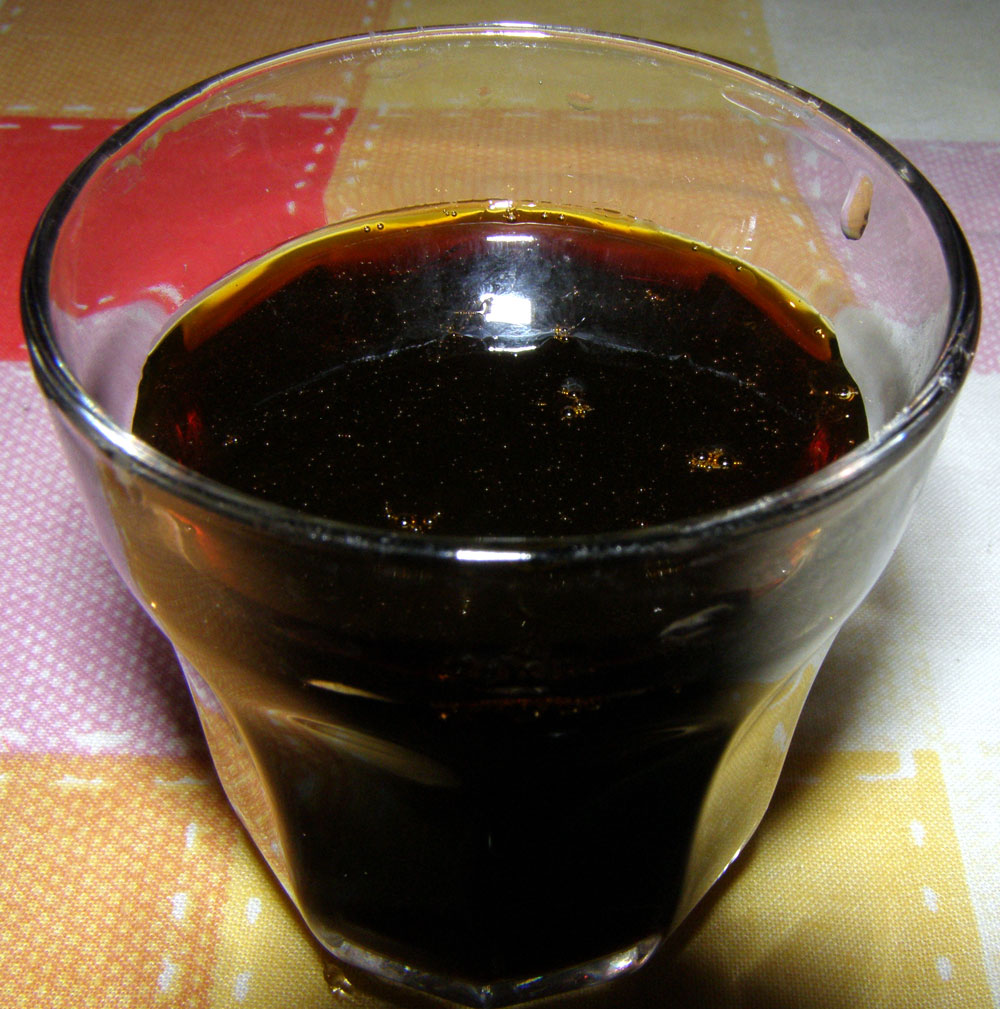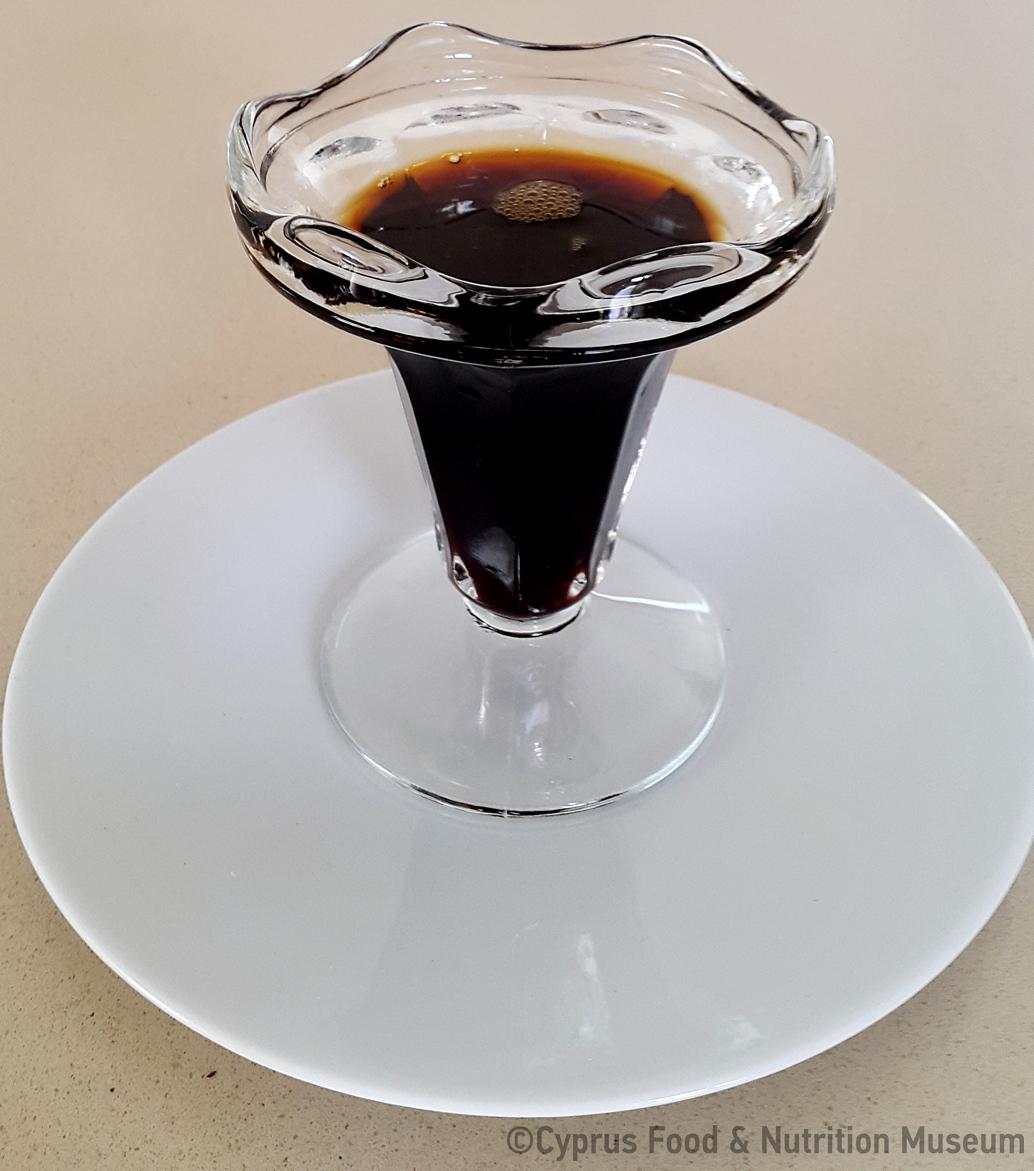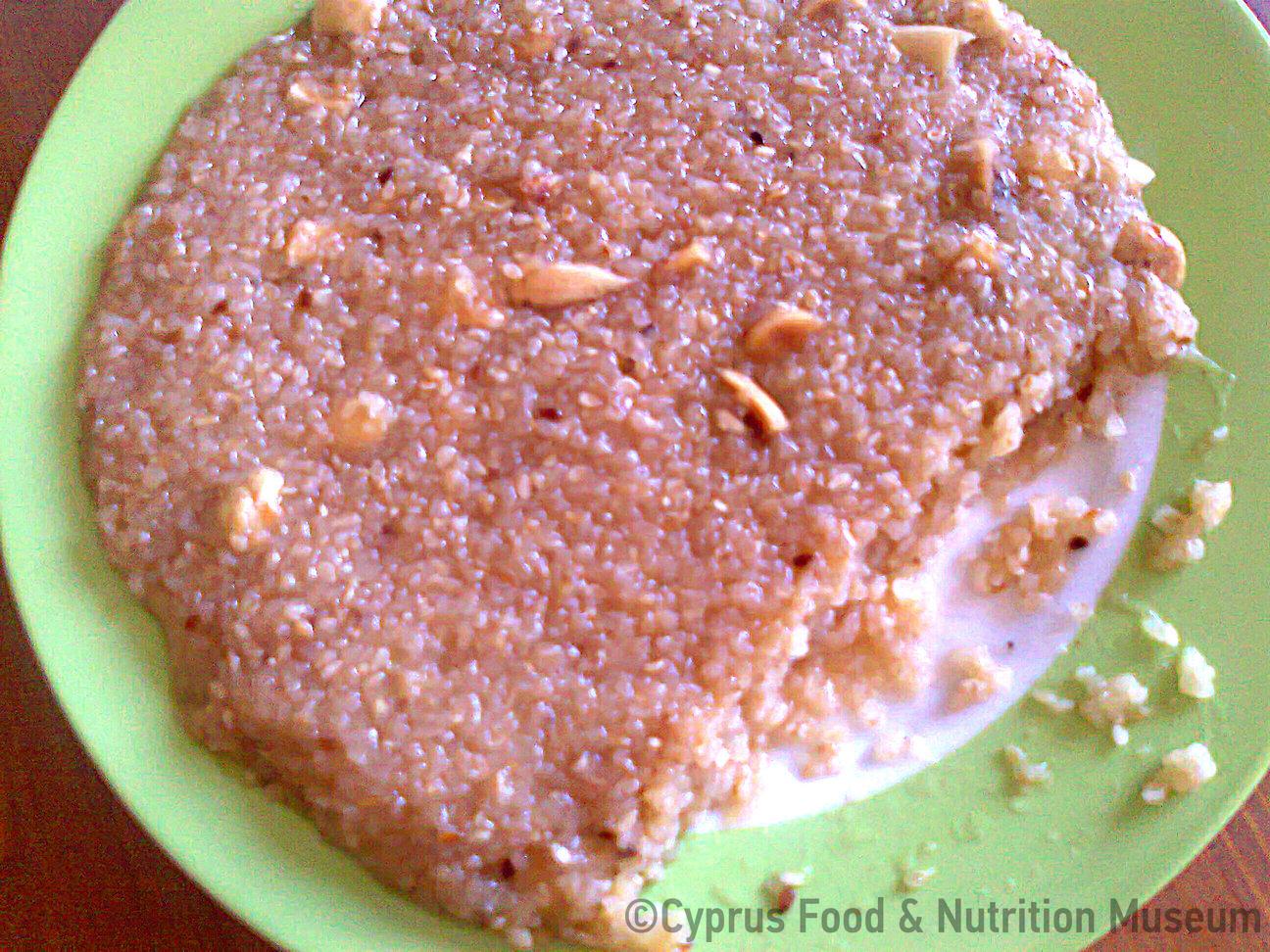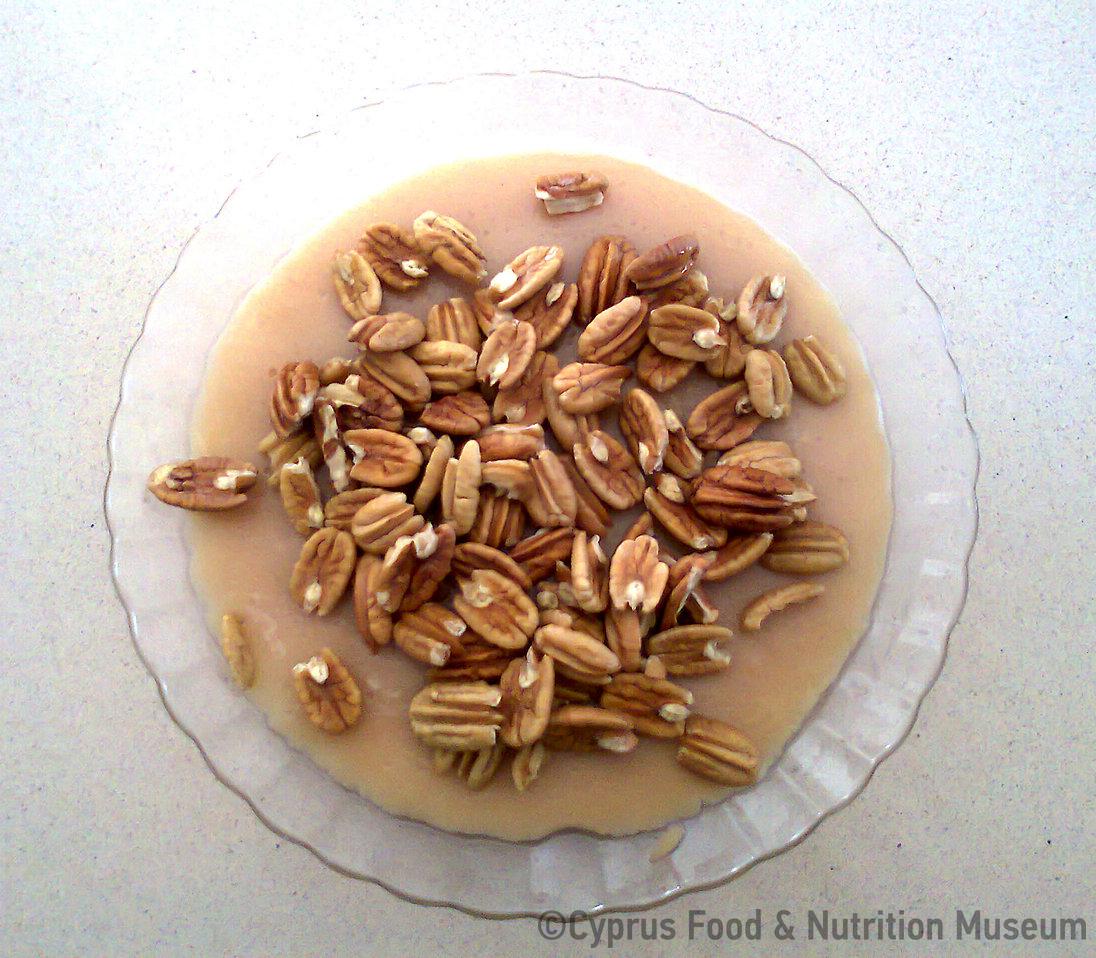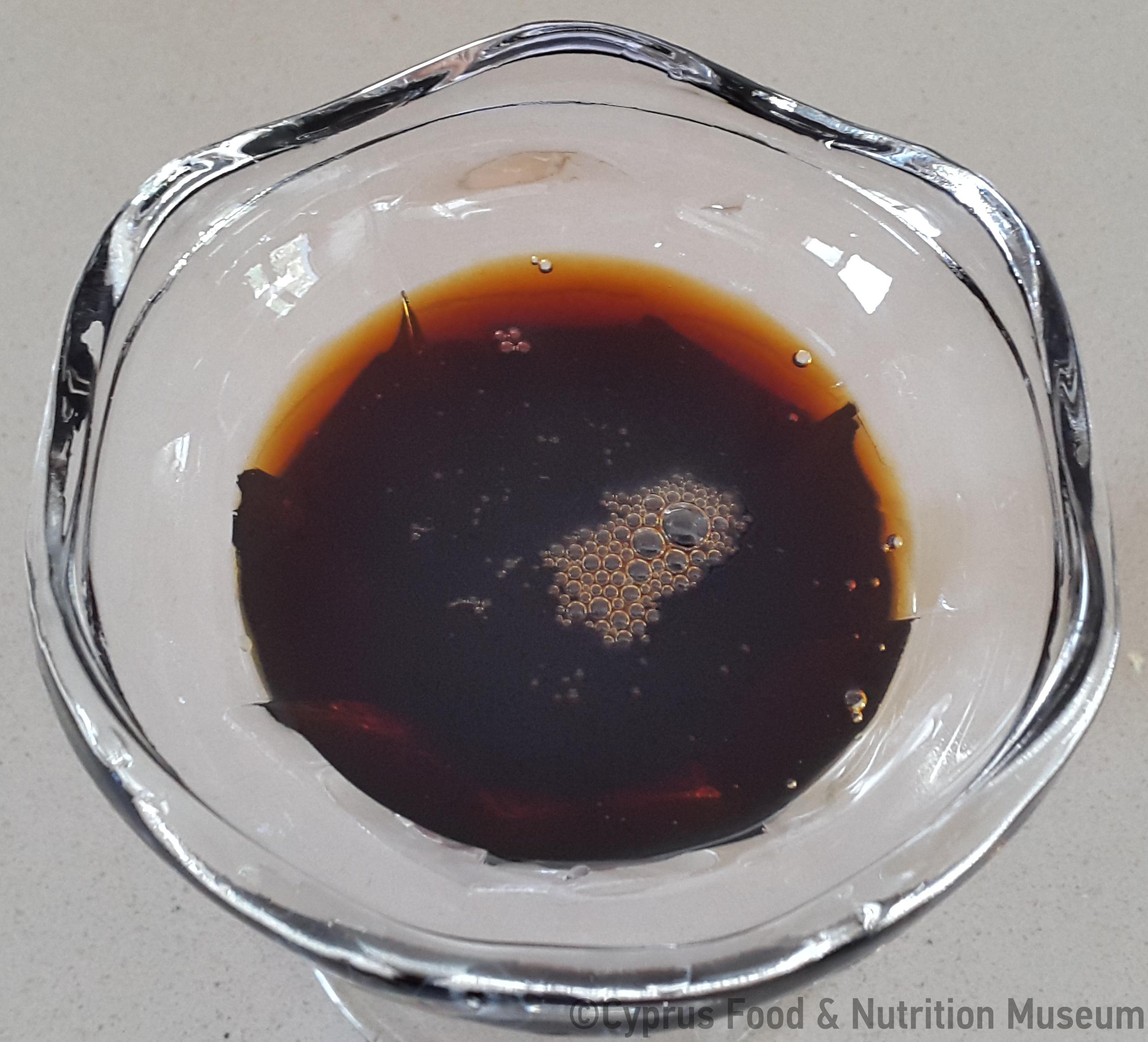Moustari is used to prepare traditional sweets, such as ppalouzes, shoushoukkos, poltos and kkiofterka.
Name - Recipe
Μούστος.
It is not just grape juice - must, but a grape juice "purified" with white soil and boiled (Kythraiotou 2013, 59).
Version A
Grapes of the xinisteri variety
White soil
Rose geranium, basil
Version B
1 box (about 20 kg) of white grapes (juice)
250 g white soil
Some lemon juice
Version C
12 cups of grape juice (xinisteri, black or marathieftiko malaga
or sultanina variety)
1 tablespoon of white soil
1 sprig of rose geranium or basil, if you prefer
3-4 tablespoons of village flour
Version A
"I take the grapes (xinisteri variety) and squeeze them with my hands to get as much juice as possible. Nowadays there are special machines that grind the grapes. Then I pass the juice through the colander and then through a cheesecloth, the kouroukla. I take the pure juice and boil it in a hartzin (big copper cauldron) over wood fire. I put white soil and skim the juice to clean it. The foam, the dirt comes to the surface and i remove it. Then I add rose geranium and basil for fragrance and let it cool. The soil sits on the bottom of the hartzin and we collect the clean moustari and store it in flasks. In the old days we used to put the moustari in pitharia (pottery vessels) and koumnes (small earthenware pithoids) for about ten days. (Androulla Christou, 58 years old from Agrilia, Limassol)
Version B
Heat the grape juice until it gets lukewarm. Add half of the soil to the grape juice to clean the moustari and skim off the foam that is created. Then let it cool. Put the moustari over heat, add the remaining soil gradually and skim off the foam. Add some lemon juice, turn off the heat and leave it to cool down. Strain the moustari and measure it. (Kyperouda, see Kourri and Lazarou 2007)
Version C
Put the must in a large pot and boil it. Remove the foam, lower the heat and sprinkle with white soil. It foams a lot and almost overflows. Carefully remove the foam and then add the rose geranium or basil. After boiling for a while, remove it from the heat. Remove the rose geranium and basil. Once the moustari is half cold (after 2-3 hours), sprinkle with a handful of flour and let itt settle overnight. On the following day the soil and flour will be at the bottom. Carefully transfer the moustari into a clean pot. (Kythraiotou 2013, 59)
Boiling.
After this treatment, the must can be stored in the refrigerator for fifteen days without any risk of turning sour. It can also be stored in the freezer (Kythraiotou 2013, 59).
Functional and symbolic role
Most of the traditional Marathasa desserts are made of must: ppalouzes, kiofteria (dried ppalouzes cut into rectangular pieces), shoutžioukkos, epsima (grape syrup like petimezi) and others. In order to make these, the must is first boiled and then a bit of white soil is added to remove impurities or to stop the process of 'boiling' the must, which turns the sugars into alcohol. The must is then carefully strained and boiled. The more highly graded the must is, the sweeter the products become (Kythraiotou 2013, 46).
Additional information and bibliography
Kythraiotou, F. (2013). Gastronomic guide of Marathasa, Ministry of Education and Culture - Pedagogical Institute, Nicosia.
Oral testimonies: Androulla Christou, 58 years old from Agrilia, Limassol. Recording: Zenovia Charalambous, October 2010. Edited by Stalo Lazarou.
Kourri, P. and Lazarou, S. (eds.) (2007) Traditional recipes of the village of Kyperounda, unpublished data.
Stalo Lazarou, Zenovia Charalambous, Petroula Hadjittofi
